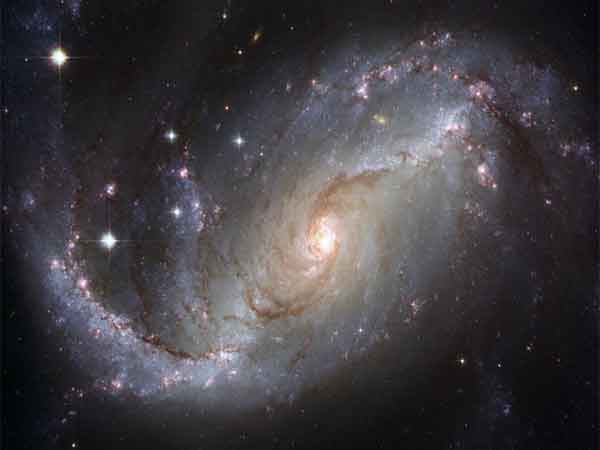Ohio [US], April 27 (ANI): A recent study has revealed that super-Earth exoplanets, worlds that are larger than Earth but smaller than Uranus or Neptune, are far more common in the universe than previously believed.
The discovery, made by an international team of researchers using the Korea Microlensing Telescope Network (KMTNet), challenges previous assumptions about the frequency and distribution of these intriguing planets.
The research team, led by astronomers from Ohio State University, Harvard University, and institutions in China and Korea, discovered that super-Earths can orbit as far from their stars as Jupiter orbits the Sun, contradicting the earlier belief that these planets are typically found only in close proximity to their host stars.
By studying light anomalies caused by gravitational microlensing, the team detected one such super-Earth, OGLE-2016-BLG-0007, which has a mass roughly twice that of Earth and an orbit wider than Saturn’s.
“This study suggests that for every three stars, there is likely at least one super-Earth with a Jupiter-like orbital period,” said Andrew Gould, a professor emeritus of astronomy at Ohio State University and co-author of the study, adding, “We are beginning to realize just how abundant these massive worlds are across the cosmos.”
The team’s discovery was made possible through the technique of microlensing, a phenomenon in which the light from a distant star is bent and magnified by the gravitational field of an object, such as a planet, passing in front of it.
This effect allows astronomers to detect objects that would otherwise be difficult to observe directly.
“This study was a major step forward,” Gould said, adding, “Scientists have long known that smaller planets are more common than large ones, but within this pattern, we’ve found excesses and deficits, offering new insights into planetary distribution.”
Through microlensing, astronomers can detect planets at various distances from their stars, including those with wider orbits.
This breakthrough helps to reveal the prevalence of super-Earths that exist beyond the inner solar system, offering a new perspective on how planets form and evolve in different environments.
One of the most significant findings of the study is its challenge to the prevailing theories of planetary formation.
While it was long believed that gas giants like Jupiter and Saturn formed through the process of runaway gas accretion, the new study suggests that the mechanisms behind the creation of these planets may vary and may include both accretion and gravitational instability.
“We cannot yet distinguish between the two leading theories of planet formation,” explained Gould, adding, “While the dominant theory suggests gas-giant formation occurs through runaway gas accretion, other researchers propose a combination of accretion and gravitational instability. Our study adds to the complexity of these models.”
The discovery of super-Earths was made possible by the KMTNet, a global network of telescopes strategically located in South Africa, Chile, and Australia.
This network allows scientists to monitor millions of stars for microlensing events, providing valuable data on distant exoplanets.
The technology that powers KMTNet’s microlensing observations was designed by Ohio State’s Imaging Sciences Laboratory (ISL).
Richard Pogge, a co-author of the study and a professor of astronomy at Ohio State, noted the rarity of finding microlensing events and the significant effort required.
“Finding a microlensing star event is already difficult. Finding one with a planet is even harder,” Pogge said, adding, “We need to observe hundreds of millions of stars to detect even a handful of these microlensing signals.”
So far, only 237 out of the more than 5,000 exoplanets discovered to date have been identified using microlensing.
However, with the continuous advancements in technology and the ongoing work of international collaborations like KMTNet, astronomers are hopeful that more discoveries will follow.
The new findings have broader implications for understanding planetary system formation.
The study revealed that exoplanets can be grouped by both their mass and composition, and it highlighted significant gaps in the distribution of certain types of planets.
These insights will likely open new avenues for future research into how planets form, evolve, and interact with their host stars.
“We’re reconstructing not only the history of the universe but also the processes that govern it,” said Pogge, adding, “Bringing these pieces together into a coherent picture has been incredibly rewarding.”
This study was published in the prestigious journal Science, marking a significant advancement in our understanding of exoplanet distribution and formation.
The study was supported by a number of institutions, including the National Science Foundation, Tsinghua University, the National Natural Science Foundation of China, and the Harvard-Smithsonian Center for Astrophysics, among others.
As technology improves and global collaborations continue, astronomers are optimistic that even more discoveries about the prevalence and variety of exoplanets await, further shaping our understanding of the universe and the conditions that might allow life to thrive elsewhere. (ANI)
Disclaimer: This story is auto-generated from a syndicated feed of ANI; only the image & headline may have been reworked by News Services Division of World News Network Inc Ltd and Palghar News and Pune News and World News
HINDI, MARATHI, GUJARATI, TAMIL, TELUGU, BENGALI, KANNADA, ORIYA, PUNJABI, URDU, MALAYALAM
For more details and packages
















